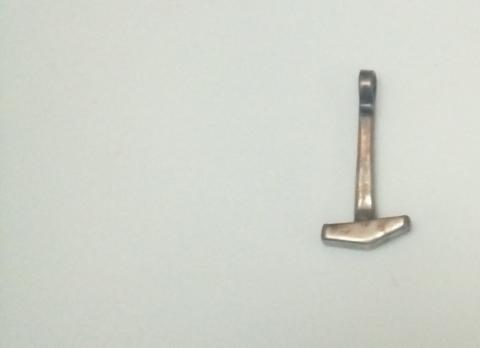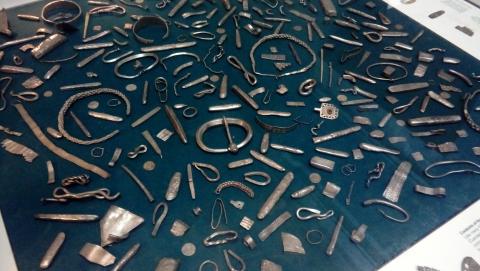Cuerdale: Silver Hammers & Leaden Hearts

The Cuerdale Hoard is a huge collection of Viking silver displayed in the British Museum. It was discovered in 1840s, at Cuerdale near Preston, by the banks of the River Ribble. One theory is that it was hidden there by Vikings freshly expelled from Dublin in 902, on their way to Viking York. The River Ribble is conveniently east of Dublin and made the journey to Jorvik that little bit quicker.
One tiny piece of the trove is a little silver hammer, almost certainly an amulet or lucky charm, invoking the attention of Thor, the Norse god of thunder, after whom Thursday is named. Interestingly, little scratches on its surface suggest someone has been testing it to see if it is made of real silver. Had it been silver plated, or just shiny base metal, its value would have fallen.
Whoever buried it in the field and then forgot about it, or more likely got killed before he could claim it, lost a great deal of money. He may have scratched each piece testing its quality, but it still did him no good. How our race invests so much in physical wealth only to have to leave it all behind. Your lovely car will one day be scrapped, your house derelict or sold-on, your treasured possessions dumped in a skip or anonymous antique shop by careless heirs. Jesus said in Matthew 6:
“Do not lay up for yourselves treasures on earth, where moth and rust destroy and where thieves break in and steal; but lay up for yourselves treasures in heaven, where neither moth nor rust destroys and where thieves do not break in and steal. For where your treasure is, there your heart will be also.
The real tragedy of Cuerdale is not someone’s missing treasure, but the number of leaden hearts that had lain with, buried in the mud.

- Log in to post comments


 Sunday Worship 10.45am & 6.00pm
Sunday Worship 10.45am & 6.00pm